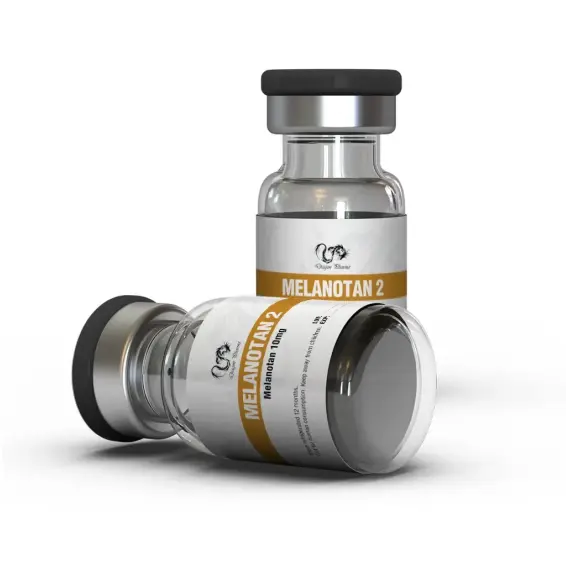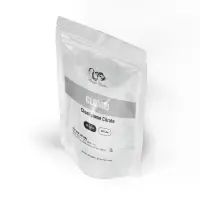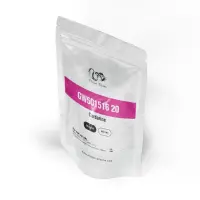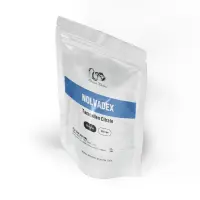- Manufacturer: Dragon Pharma
- Substance: Melanotan II Peptide Hormone
- Dosage: 10 mg
- Form:Injection
- Packing: vial
- Brand Name: Melanotan
Shipping From
Melanotan II by Dragon Pharma is a synthetic peptide hormone delivered as a 10 mg lyophilized powder vial. Designed to mimic alpha-melanocyte-stimulating hormone (α-MSH), it promotes melanin production for a deep, even tan without prolonged sun exposure and enhances libido, making it a versatile tool for bodybuilders and health enthusiasts aiming for an aesthetic, confident physique. Its half-life of 33 hours ensures sustained effects with minimal dosing.
What It Is
Melanotan II is a synthetic analog of α-MSH, a hormone that regulates pigmentation, appetite, and sexual function. Originally developed to reduce skin cancer risk by enhancing tanning, it's now popular in bodybuilding for its ability to darken skin and boost libido. Unlike Melanotan I, Melanotan II also activates additional melanocortin receptors (MC3R, MC4R), offering broader effects like appetite suppression and sexual arousal. It's administered via subcutaneous injection after reconstitution with bacteriostatic water.
How It Works
Melanotan II binds to melanocortin receptors (MC1R, MC3R, MC4R, MC5R), stimulating melanogenesis to increase eumelanin production, resulting in darker skin. It also crosses the blood-brain barrier to activate MC4R, enhancing sexual arousal and libido. Additionally, it may suppress appetite via MC3R, aiding fat loss. The peptide's half-life of 33 hours allows for daily or every-other-day dosing, with detection times up to several weeks in drug tests.
Melanotan II Benefits
- Sunless Tanning: Achieves a deep, even tan with minimal UV exposure.
- Libido Enhancement: Boosts sexual arousal and performance in men and women.
- Fat Loss Support: May suppress appetite, aiding weight management.
- UV Protection: Potential reduction in UV-induced skin damage.
- Enhanced Aesthetics: Improves skin tone for a defined, attractive physique.
Who It's For
Melanotan II is ideal for male and female bodybuilders aged 21–60 seeking a dark tan and enhanced libido without excessive sun exposure. It's suitable for intermediate to advanced users aiming for aesthetic enhancement and fat loss. Not for: Individuals under 21, those with melanoma history, or those not under medical supervision. Regular skin checks and blood work are recommended.
How to Use
Dosage: Typical dosage is 0.25–0.5 mg/day (250–500 mcg), starting at 0.25 mg to assess tolerance. Women may use the same range under medical supervision. After desired tan is achieved, maintenance doses of 0.5 mg 1–2 times weekly suffice.
Administration: Reconstitute the 10 mg vial with 2 ml bacteriostatic water. Inject subcutaneously (e.g., abdomen) using a 0.5-inch insulin syringe (27–30G). Administer 30 minutes before UV exposure or at bedtime to minimize side effects. Cycles typically last 2–4 weeks for tanning, with maintenance as needed.
Results Timeline: Skin darkening begins within 5–7 days, with significant tanning in 1–2 weeks. Libido effects may appear within 1–5 hours post-dose.
Stacking Suggestions
Melanotan II can be stacked for enhanced results:
- Tanning Stack: Combine with minimal UV exposure (10–15 min/week) for amplified pigmentation.
- Libido Stack: Pair with PT-141 (0.5–2 mg as needed) for enhanced sexual function.
- Fat Loss Stack: Use with Cardarine (10–20 mg/day) for synergistic fat loss and energy.
Side Effects
Melanotan II may cause:
- Short-Term: Nausea, facial flushing, yawning, or spontaneous erections (1–5 hours post-dose).
- Skin Changes: Darkening or new moles, freckles; reversible upon discontinuation.
- Long-Term Risks: Potential increased melanoma risk; regular dermatology checks needed.
- Other: Rare cases of rhabdomyolysis or encephalopathy; monitor with medical supervision.
Melanotan II is not hepatotoxic but requires sterile handling to avoid infection. Regular skin and blood monitoring is essential.
Post Cycle Therapy (PCT)
Melanotan II does not suppress testosterone or hormones, so PCT is not required. If stacked with anabolic steroids, follow standard PCT protocols (e.g., Clomid 50 mg/day, Nolvadex 20–40 mg/day for 4–6 weeks). Melanotan II can be continued during PCT for tanning maintenance.
Frequently Asked Questions
What is Melanotan II?
Melanotan II is a synthetic peptide mimicking α-MSH, promoting melanin production for sunless tanning and enhancing libido by activating melanocortin receptors.
Where to inject Melanotan II?
Inject Melanotan II subcutaneously in fatty areas like the abdomen or thigh using a 0.5-inch insulin syringe (27–30G). Rotate sites to avoid irritation.
Does Melanotan 2 cause freckles?
Yes, Melanotan II may cause darkening or new freckles/moles due to increased melanin production, especially in fair-skinned users. These typically fade after discontinuation.
What is the difference between Melanotan I and Melanotan II?
Melanotan I is a linear peptide focused solely on tanning with fewer side effects, while Melanotan II, a cyclic peptide, also enhances libido and suppresses appetite but has more side effects.
Does Melanotan 2 help with ED?
Yes, Melanotan II can help with erectile dysfunction by stimulating MC4R, increasing sexual arousal and erection hardness, with effects often seen 1–5 hours post-dose.
How long does it take Melanotan 2 to work?
Melanotan II typically shows tanning effects within 5–7 days, with significant darkening in 1–2 weeks. Libido effects may occur within 1–5 hours post-dose.




